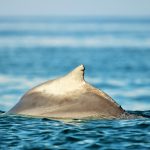If the age of the Earth were a calendar year and today were a breath before midnight on New Year’s Eve, we showed up a scant fifteen minutes ago, and all of recorded history has blinked by the last sixty seconds. Luckily for us, our planet-mates–the fantastic meshwork of plants, animals, and microbes–have been patiently perfecting their wares since March, an incredible 3.8 billion years since the first bacteria.
In that time, life has learned to fly, circumnavigate the globe, live in the depths of the ocean and atop the highest peaks, craft miracle materials, light up the night, lasso the sun’s energy, and build a self-reflective brain. Collectively, organisms have managed to turn rock and sea into a life-friendly home, with steady temperatures and smoothly percolating cycles. In short, living things have done everything we want to do, without guzzling fossil fuel, polluting the planet, or mortgaging their future. What better models could there be?
In a society accustomed to dominating or “improving” nature, this respectful imitation is a radically new approach, a revolution really. Unlike the Industrial Revolution, the Biomimicry Revolution introduces an era based not on what we can extract from nature, but on what we can learn from her.
In a biomimetic world, we would manufacture the way animals and plants do, using sun and simple compounds to produce totally biodegradable fibers, ceramics, plastics, and chemicals. Our farms, modeled on prairies, would be self-fertilizing and pest-resistant. To find new drugs or crops, we would consult animals and insects that have used plants for millions of years to keep themselves healthy and nourished. Even computing would take its cue from nature, with software that “evolves” solutions, and hardware that uses the lock-and-key paradigm to compute by touch.
Humbling are the hordes of organisms casually performing feats we can only dream about. Bioluminescent algae splash chemicals together to light their body lanterns. Arctic fish and frogs freeze solid and then spring to life, having protected their organs from ice damage. Black bears hibernate all winter without poisoning themselves on their urea, while their polar cousins stay active, with a coat of transparent hollow hairs covering their skins like the panes of a greenhouse. Chameleons and cuttlefish hide without moving, changing the pattern of their skin to instantly blend with their surroundings. Bees, turtles, and birds navigate without maps, while whales and penguins dive without scuba gear. How do they do it? How do dragonflies outmaneuver our best helicopters? How do hummingbirds cross the Gulf of Mexico on less than one tenth of an ounce of fuel? How do ants carry the equivalent of hundreds of pounds in a dead heat through the jungle?
The last really famous bio-mimetic invention was the airplane (the Wright brothers watched vultures to learn the nuances of drag and lift). We flew like a bird for the first time in 1903, and by 1914, we were dropping bombs from the sky.
Although we are different, and we have had a run of spectacular luck, we are not necessarily the best survivors over the long haul. The real survivors are the Earth inhabitants that have lived millions of years without consuming their ecological capital, the base from which all abundance flows.
Janine M. Benyus, ISBN: 0-688-13691-5


